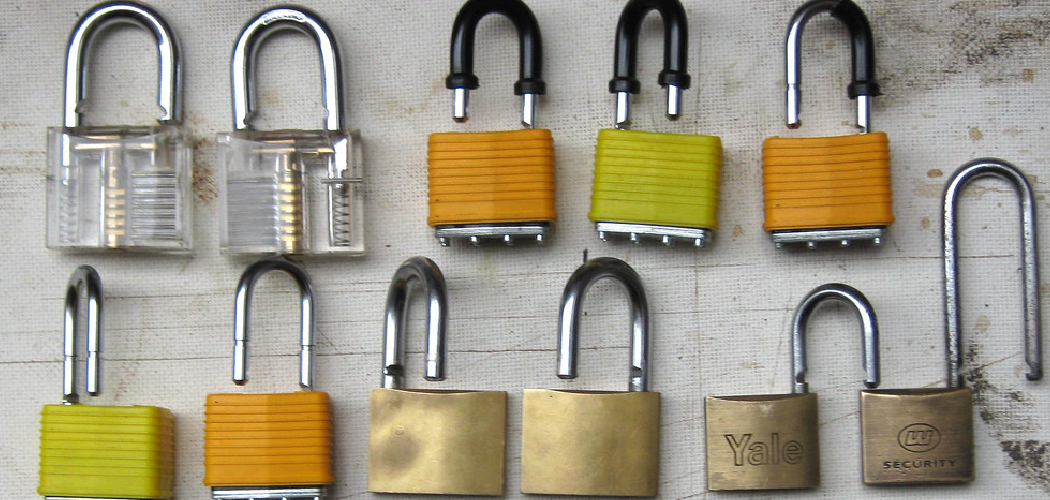A sticky lock can be a frustrating inconvenience, making it difficult to secure your home, car, or belongings properly.
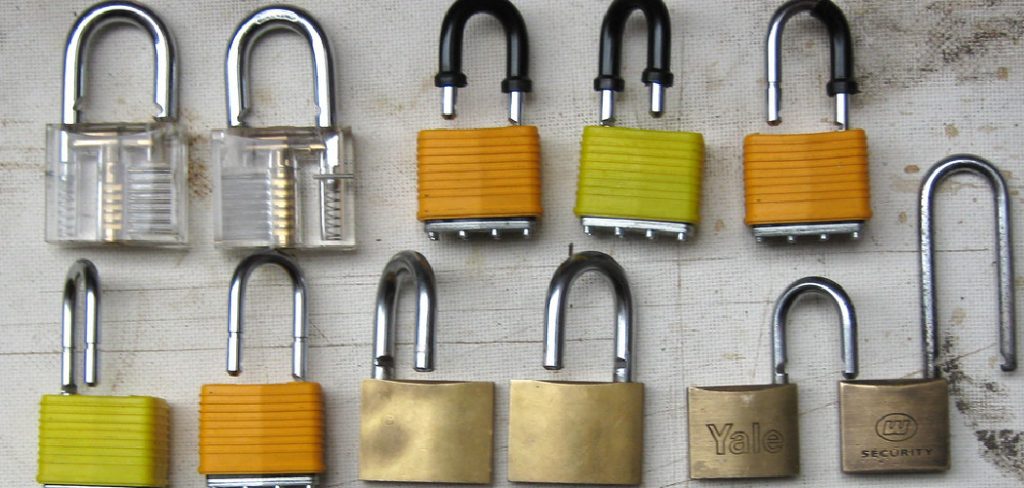
Over time, locks can become sticky due to dirt, debris, rust, or wear and tear. Fortunately, with a few simple tools and a little know-how, you can restore your lock’s functionality without needing to replace it.
This guide on how to fix a sticky lock will walk you through effective methods to fix a sticky lock and ensure it operates smoothly.
Why Do Locks Get Sticky?
Locks can become sticky for various reasons, including:
Dirt and Debris Build-up:
Regular use of a lock can lead to the accumulation of dirt, dust, and other debris inside its mechanism. This build-up can hinder the smooth movement of the lock’s components, causing it to stick.
Rust and Corrosion:
Another common cause of a sticky lock is rust or corrosion. This can occur due to exposure to moisture, which can cause metal parts to deteriorate and stick together.
Wear and Tear:
With frequent use, locks can experience wear and tear, causing the internal components to become misaligned or damaged. This can lead to the lock becoming stiff or difficult to turn.
Needed Materials
To fix a sticky lock, you will need the following materials:
- Lubricant (Such as Graphite Powder or Silicone Spray)
- Cleaning Solution (Such as Wd-40 or White Vinegar)
- Small Brush or Toothbrush
- Rag or Paper Towels
- Pliers (if Needed to Remove the Lock)
8 Step-by-step Guidelines on How to Fix a Sticky Lock
Step 1: Clean the Keyhole

Begin by cleaning the keyhole to remove any dirt, debris, or grime that may be causing the lock to stick. Insert a small brush or toothbrush into the keyhole and gently scrub to loosen and remove particles. If necessary, apply a small amount of cleaning solution, such as WD-40 or white vinegar, to help break down stubborn debris.
Wipe away any excess solution with a rag or paper towels to prevent residue from building up inside the lock. This step ensures a clean starting point for the rest of the process.
Step 2: Lubricate the Lock
Next, apply a lubricant to the lock’s internal mechanism. This will help loosen any stuck parts and improve the lock’s overall functionality. Graphite powder or silicone spray are both excellent options for lubricating locks. Insert your key into the keyhole and turn it back and forth a few times to distribute the lubricant evenly.
The use of a lubricant can also help prevent future sticking.
Step 3: Check the Key
Sometimes, a sticky lock may not be the result of the lock itself but an issue with the key. Inspect your key for any signs of bent or damaged teeth that could hinder its movement within the lock. If you notice damage, consider using a spare key or have a professional locksmith cut a new one based on the original.
Additionally, clean the key with a cloth and apply a small amount of lubricant if necessary to ensure it moves smoothly within the lock mechanism.
Step 4: Remove and Clean the Lock
If the above steps do not resolve the issue, you may need to remove the lock for a more thorough cleaning. Use pliers to unscrew any visible screws holding the lock in place. Once removed, disassemble the lock and clean each component thoroughly with a cleaning solution. Be sure to dry each piece completely before reassembling.
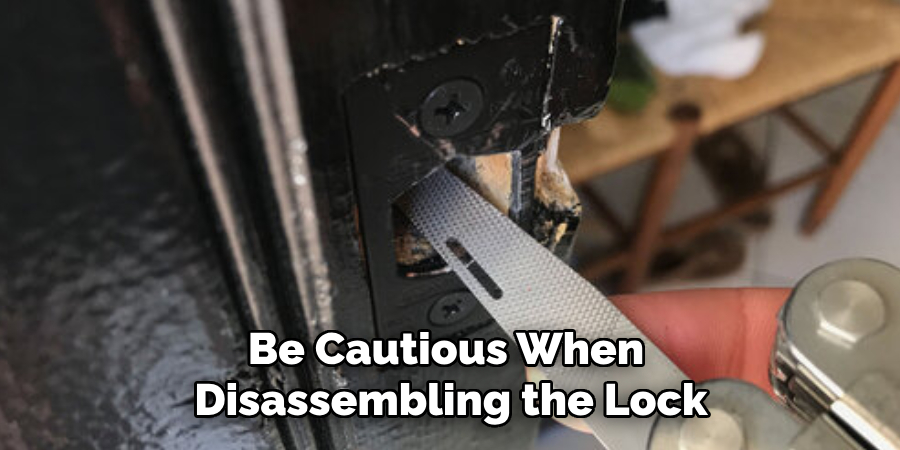
But, be cautious when disassembling the lock as some may have small springs or other delicate parts that can easily get lost. If you are unsure of how to reassemble the lock, it’s best to seek professional assistance.
Step 5: Check for Misalignment
After cleaning and lubricating the lock, check for any signs of misalignment between the key and the locking mechanism. If the lock is not aligned correctly, it may still stick even after cleaning and lubrication. Use pliers or a screwdriver to adjust any bent components until they are in their proper positions.
The key should turn smoothly and easily in the lock without any resistance.
Step 6: Address Rust or Corrosion
If your lock has visible rust or signs of corrosion, you can use a commercial rust remover to dissolve the build-up. Alternatively, you can also create a mixture of equal parts white vinegar and water and soak the affected area for a few hours before scrubbing it clean with a brush.
Once the rust or corrosion is removed, be sure to thoroughly dry the lock before lubricating and reassembling it.
Step 7: Use Heat
In some cases, applying heat can help loosen stuck components within a lock. You can use a hairdryer or heat gun to warm up the lock, but be cautious not to overheat it. Once heated, try turning the key again to see if it moves more easily.
It is essential to be careful when using heat as it can damage plastic or rubber components within the lock.
Step 8: Seek Professional Help
If all else fails, or if you are uncomfortable disassembling and reassembling your lock, consider seeking professional help from a locksmith. They have the expertise and tools needed to fix a sticky lock effectively and efficiently.
Following these steps on how to fix a sticky lock should help resolve any issues with a sticky lock. Remember to regularly maintain your locks by keeping them clean and lubricated to prevent future sticking. Additionally, be careful not to use excessive force when turning the key as this can cause damage or further sticking. If the problem persists, it may be time to consider replacing the lock entirely. So, always take proper care of your locks to ensure they operate smoothly and keep your belongings safe. Happy unlocking!
Do You Need to Use Professionals?
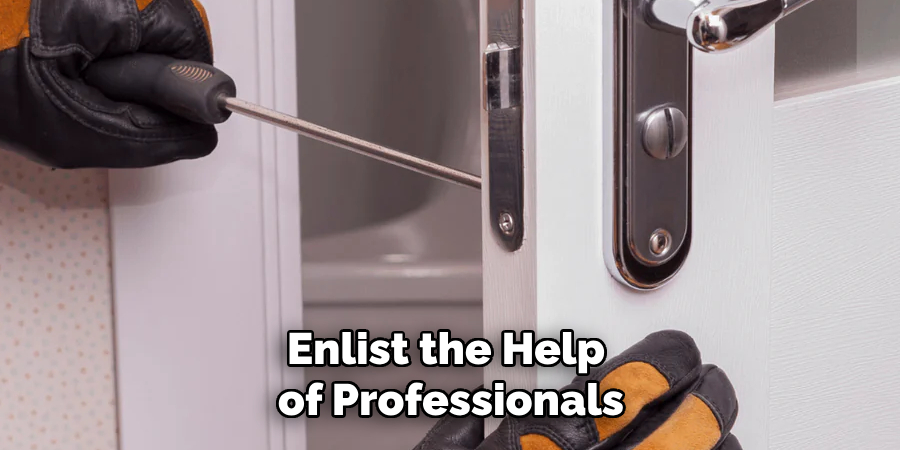
Deciding whether to enlist the help of professionals depends on the severity of the issue and your level of comfort with troubleshooting. While many sticky lock problems can be resolved with basic cleaning and lubrication techniques, some issues, such as significant rust, severe misalignment, or damaged internal components, may require the expertise of a locksmith. Professionals have specialized tools and the necessary experience to diagnose and repair even the most complex lock problems effectively.
If you’re unsure about disassembling the lock yourself or if previous efforts to fix it haven’t been successful, consulting a professional is highly recommended. Additionally, hiring a locksmith ensures that the job is done safely, avoiding potential damage to the lock or further complications. For high-security locks or locks linked to security systems, professional assistance is particularly important to prevent compromising your home’s safety. Investing in a locksmith can save time, hassle, and potentially costly mistakes in the long run.
Frequently Asked Questions
Q: How Often Should I Clean and Lubricate My Locks?
A: It is recommended to clean and lubricate your locks at least once a year, but it may be beneficial to do so more frequently, especially for exterior locks exposed to the elements. Regular maintenance can prevent future sticking and prolong the lifespan of your locks.
Q: Can I Use WD-40 as a Lock Lubricant?
A: While WD-40 is a popular lubricant, it is not recommended for use on locks as it can attract dirt and debris, which can cause further issues with sticking over time. It also tends to dry out quickly, making frequent reapplication necessary. Instead, opt for graphite powder or silicone spray specifically designed for lubricating locks.
Q: Why Is My Key Still Sticking After Cleaning and Lubrication?
A: If your key is still sticking after cleaning and lubricating the lock, it may be a sign of a more significant issue such as misalignment or damaged internal components. In this case, seeking professional help is recommended for proper diagnosis and repair.
Q: Can I Use Household Items to Clean My Lock?
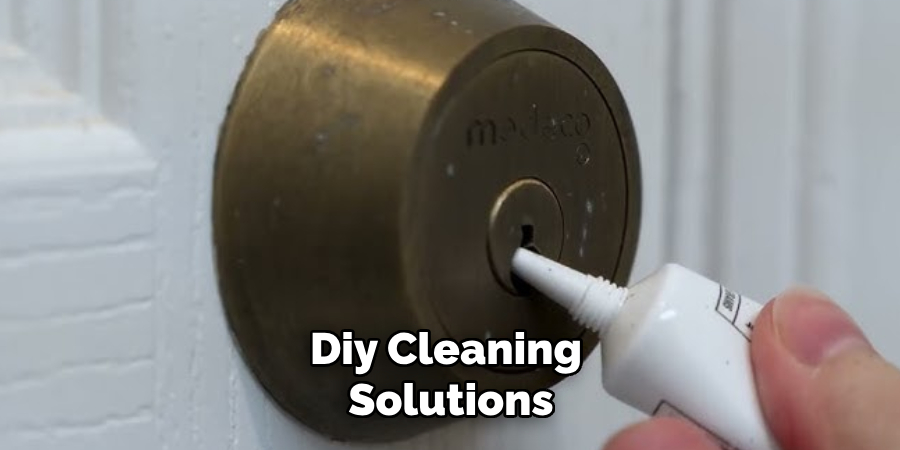
A: While there are some DIY cleaning solutions that can be effective, it is not recommended to use household items on your locks unless you are sure of their compatibility. Harsh chemicals or abrasive materials can damage the lock and make the problem worse. It is best to use commercial products specifically designed for cleaning locks.
Conclusion
A stuck lock can be an inconvenience, but with these simple steps on how to fix a sticky lock, you can easily fix it yourself without having to replace the entire lock. Regular maintenance and proper care can prevent sticky locks from happening in the first place, so be sure to pay attention to your locks every now and then. However, if the problem persists or you are uncomfortable trying these methods yourself, it is always best to seek professional help for a more thorough fix.
Remember to always use caution when handling tools or applying heat to prevent any damage or harm. With these tips, you can keep your locks working smoothly and make sure your belongings remain secure.

